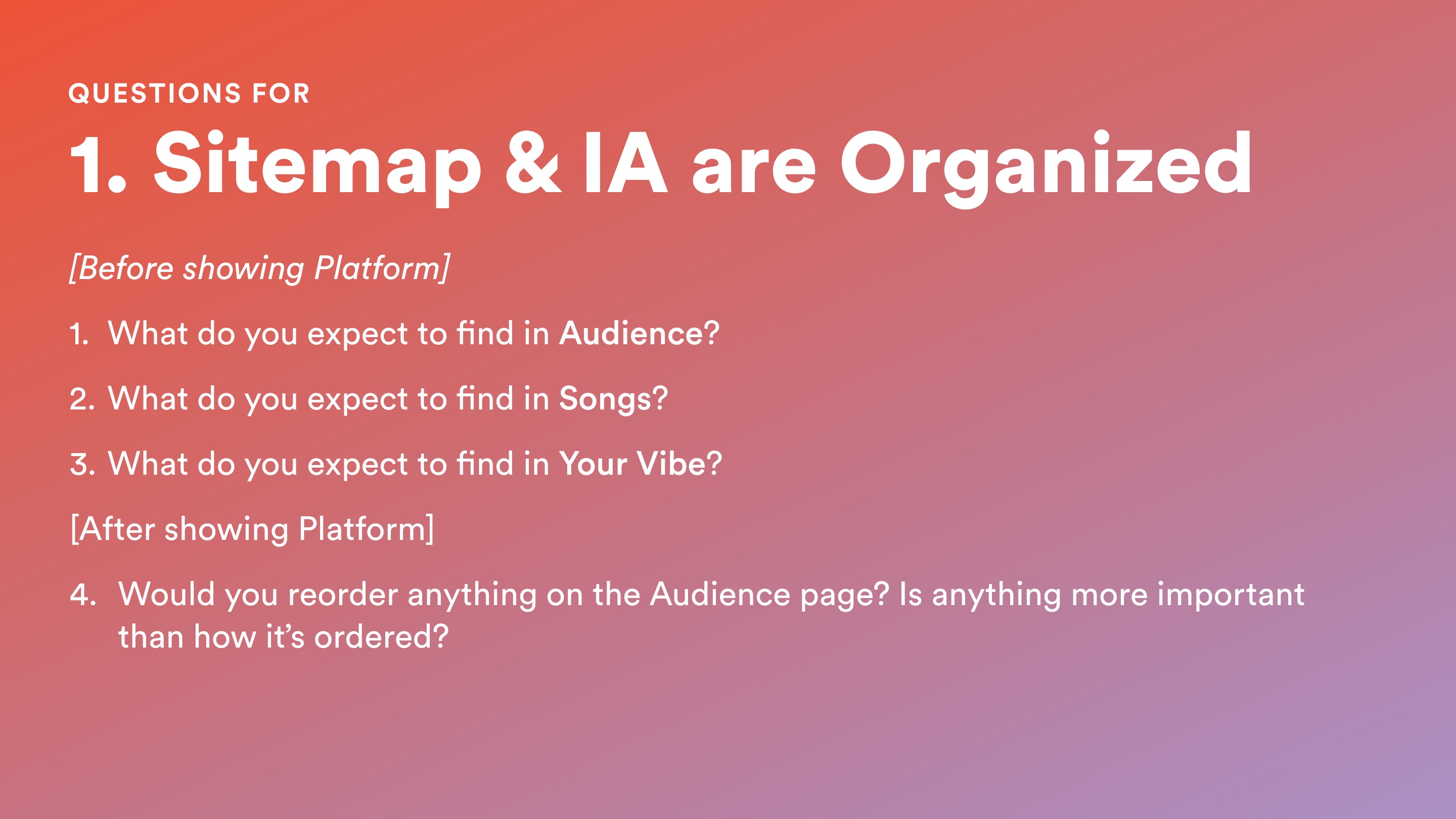I wanted to imagine what it would look like for a first time artist beginning to publish music on an streaming-music giant like Spotify. First I started with a competitive analysis, trying to learn as much as I can about what already exists in the market such as SoundCloud and iTunes/Apple Music. I also reached out to two of my really good friends, Erick Antonio Henderson who performs in a group called Onyx Leon, and Emily Elizabeth Lazio, who is a singer/songwriter and just a pleasure to be around. Although both of them had published works at the time, neither one of them had really wondered what the platform was about or how to use it, which was great for me–someone who wanted to learn why they weren't using it and what features would compel them to.

After a quick discovery, I learned what content was most important to them, and how the data can be manipulated into being something useful for artists. The biggest takeaway was the financial aspect for them. Being that they were releasing music slowly and they didn't have a huge fanbase, it was still important to them to learn how many streams they had and what royalties were. Another huge takeaway was tips and help. Both of them were just getting started in the business and didn't know what the next steps are. They wanted a platform that would understand insights from similar genres and artists, and recommend suggestions on how to move their music business forward.

I later created a sitemap of all the pages in the dashboard and what I thought could be product extensions of the platform that could potentially benefit the user/artists in the long run.


Below are the comps of the dashboard I created.




Finally, I wanted to ensure that what I had created resonated with my intended audience. I put together a testing plan full of assumptions and tasks to help validate my design and content decisions. Below is an example of some tasks by assumption.
